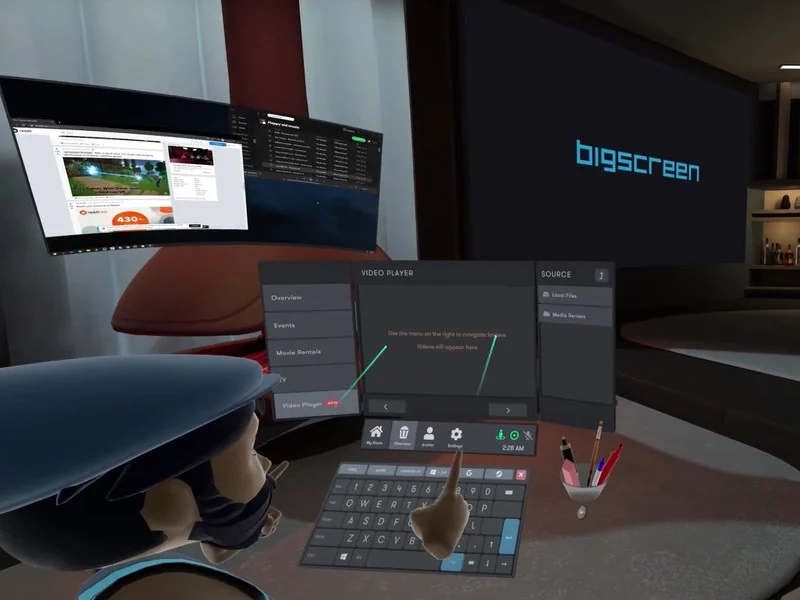Virtual Desktop, an Oculus Quest app that lets users control their Windows PCs from within the headset, now can wirelessly stream PC VR games to the headset. Previously, Facebook had refused to allow the feature to integrate into the app, forcing it to rely on a time-consuming side loading process.
Virtual Desktop is a long-running piece of virtual desktop software that allows users to access their Windows PCs from within their VR headset. It is also available for PC VR headsets. The Quest version of the headset released in 2019 and later updated with an extra feature that allowed users to stream PC VR content from Oculus PC and SteamVR to Quest, similar to how Oculus Link works wirelessly.

Soon after, Oculus forced the developer to remove the feature, claiming it did not meet the company's quality standards. We could patch the feature into the app, but it required a complicated side loading process that involved users posing as developers to get the files onto their headset.
The controversial decision remained in place for more than a year and a half, until today, when Oculus reversed course and allowed the full-featured version of Virtual Desktop, which includes PC VR streaming capabilities, to released on the Quest store, according to UploadVR.
The move comes shortly after Oculus announced App Lab, a long-awaited official way for developers to distribute apps on Quest without having to go through Oculus' "curation" process.
Because the capability didn't explicitly violate any of Oculus' technical guidelines, if Oculus wouldn't allow the Pc VR streaming feature of Virtual Desktop onto the main Quest store, it should at least allow an App Lab version. Oculus surprised everyone by allowing the full version of Virtual Desktop to sell on the main Quest store rather than just App Lab.
While Quest has perceived as a closed platform because of Oculus' decision to hand-curate its store for quality, with the addition of App Lab, Virtual Desktop, and a growing number of non-game applications to the store, the company's content strategy for the headset is shifting dramatically.

You should also check out the following articles:
- VR BUYING GUIDE AND THE BEST VR HEADSET FOR 2022
- A meta market opportunity: The metaverse could soon be worth $1 trillion
- Facebook wants to build a metaverse. Microsoft is creating something even more ambitious.
- How to succeed in the virtual reality world of tomorrow?
- Books you must read about virtual reality
- Best New Augmented Reality Books To Read In 2021
- US$ 4.7 Billion- The global augmented reality gaming market
- The smart glasses revolution is about to get real
- Consumer Brands Reinventing Marketing in the Metaverse
- Imagine Making Money in Rec Room
- The biggest AR and VR predictions of 2022
- Apple hired Meta's AR communications lead ahead of the 2022 launch of the headset.
- Who Will Be in Charge of the Metaverse?
- The Kingdom of Abraham: The first Jewish metaverse
- Gen Z are planning to spend thousands on cryptocurrency, NFTs and metaverse
- According to Goldman Sachs, the metaverse must run on blockchain
- What You Can Create With a Small Piece of Land in the Metaverse
- How To Buy Land In The Metaverse?





